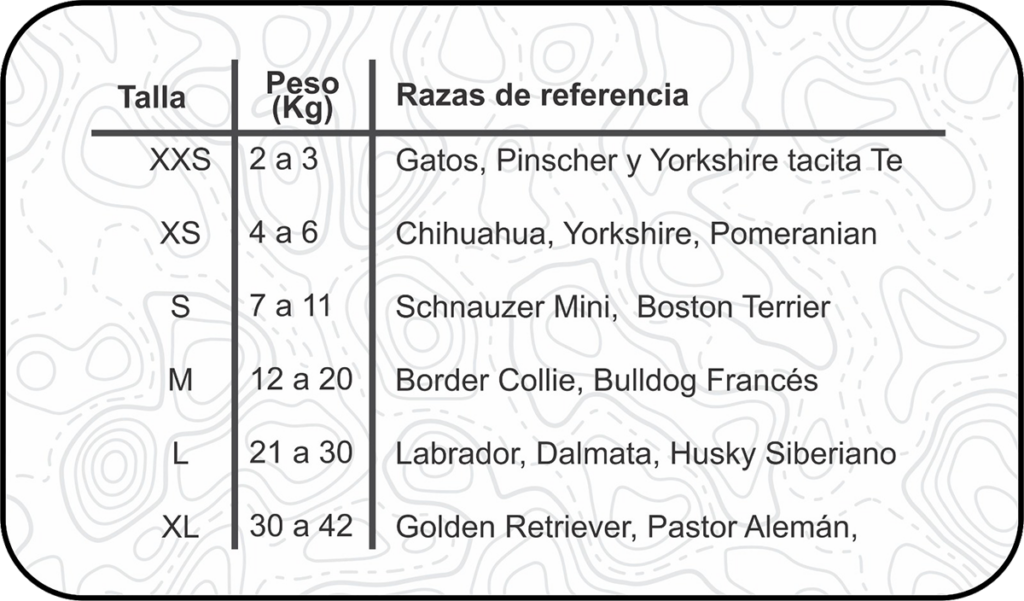
Things to Consider for Traveling with your Dog: Complete Guide 2025
Traveling with your dog requires careful planning that includes veterinary documentation, proper carrier, necessary medications and pet-friendly accommodations. Thorough preparation ensures the safety and comfort of both the animal and the owner throughout the journey.
Documentation and Legal Requirements
Veterinary Health Certificate
The most important document for any pet travel is the health certificate issued by an authorized veterinarian. This certificate must be issued within 10 days prior to travel and confirm that the animal is in optimal condition for travel.
Information to be included:
- Complete animal identification (breed, age, weight, color)
- Microchip or tattoo identification number
- Vaccines updated with specific dates
- Recent antiparasitic treatments
- Signature and stamp of the registered veterinarian
Mandatory Vaccinations
The required vaccinations vary according to the destination, but there are some that are considered universal for travel. Rabies vaccination is mandatory in virtually all destinations and must be current for the entire period of travel.
Essential travel vaccines:
- Rabies: Mandatory, must be applied at least 21 days prior to the trip.
- DHPP: Distemper, hepatitis, parvovirus and parainfluenza.
- Bordetella: Especially important if the dog will be in contact with other animals.
- Lyme: Recommended for destinations where ticks are present
International Documentation
For international travel, the requirements become stricter and more specific. Each country has particular regulations that must be complied with exactly to avoid quarantine or rejection at the border.
Additional documents required:
- Pet passport (in the European Union)
- International veterinary certificate
- Serological tests for rabies antibodies
- Specific treatments according to the country of destination
- Import permits when required
Transportation Preparation
Choice of Carrier
The carrier is the most important tool to ensure the safety of the dog during the trip. The dimensions must allow the animal to stand up, turn around and lie down comfortably, but without excess space that could cause injuries due to sudden movements.
Characteristics of the ideal carrier:
- Appropriate size: The dog must be able to stand without touching the ceiling.
- Adequate ventilation: Openings on at least three sides
- Resistant material: Preferably rigid plastic or metal for long travels
- Secure closure: Reliable yet accessible locking system
- Non-slip base: Surface that avoids movement during transport
Prior Acclimatization
Familiarization with the carrier should begin weeks before the trip to reduce stress on the animal. This gradual process helps the dog associate the carrier with positive experiences rather than just trips to the veterinarian.
Process of habituation:
- Week 1: Place the open carrier in a common area with prizes inside.
- Week 2: Feed the dog close to and gradually inside the carrier.
- Week 3: Close the door for short periods while the dog is inside.
- Week 4: Short trips by car with the dog in the dog carrier
Vehicle Safety
The carrier must be properly secured inside the vehicle to prevent injury in the event of sudden braking or accidents. Special seat belts for carriers are an essential investment for safety.
Lodging Planning
Pet-Friendly Hotels
Advance reservations at pet-friendly establishments are crucial, especially during peak seasons. Many hotels have limitations on the number of rooms available for guests with pets and specific policies that should be known in advance.
Aspects to verify when booking:
- Pet policy: Allowable sizes, number of animals, breed restrictions
- Additional costs: Deposits, daily rates, cleaning charges
- Facilities: Designated areas for rides, care services
- Location: Proximity to parks, veterinarians and pet stores
Lodging Alternatives
Vacation rentals often offer greater flexibility and convenience for travel with pets. Platforms like Airbnb allow you to filter specifically for pet-friendly properties and often provide more space and freedom.
Advantages of vacation rentals:
- Wider spaces for animal movement
- Private patios or gardens for exercise
- Kitchens to prepare family meals if necessary
- Less restriction in schedules and routines
Camping and Outdoor Activities
Camping is an excellent option for travel with active dogs, but requires additional preparation to ensure the animal's safety and comfort in natural surroundings.
Essential Travel Kit
Food and Hydration
Maintaining the dog's usual diet during the trip minimizes digestive problems and additional stress. Carrying enough family food for the entire trip, plus an extra reserve for emergencies, is a recommended practice.
Power supply list:
- Dry food: Amount for the entire trip plus extra 20%
- Family awards: For positive reinforcement and comfort
- Portable bowls: Preferably foldable to save space
- Bottled water: Especially important in destinations with different water
- Water dispenser: To maintain constant hydration
Medications and First Aid
A dog-friendly first aid kit can make all the difference in emergency situations, especially in remote destinations where veterinary access is limited.
Components of the canine first aid kit:
- Usual medicines: Sufficient supply for the entire trip
- Antihistamines: For mild allergic reactions
- Digital thermometer: To monitor body temperature
- Gauze and bandages: For minor injuries
- Saline solution: For cleaning wounds or eye irritation
- Veterinary information: Destination emergency contacts
Comfort and Entertainment
Familiar objects provide psychological comfort and help maintain normal routines in unfamiliar environments. These items are especially important for dogs that are anxious or sensitive to change.
Comfort items:
- Blanket or family bed: With the smell of home
- Favorite toys: For entertainment and anxiety reduction
- Collar with identification: With updated contact information
- Additional strap: As a backup in case of loss or breakage
Air Transportation with Pets
Airline Regulations
Each airline has specific policies for transporting pets that must be researched and followed exactly. Regulations can vary significantly between airlines and routes, especially for international flights.
Critical aspects to be verified:
- Allowable dimensions: For cabin and hold carriers
- Maximum weights: Including the weight of the carrier
- Restricted breeds: Some airlines ban brachycephalic breeds
- Required documentation: In addition to the general legal requirements
- Associated costs: Rates may vary depending on the route
Flight Preparation
Flights generate additional stress for the animals due to noise, vibration and pressure changes. Proper preparation can significantly minimize these discomforts and make the experience more tolerable.
Pre-flight recommendations:
- Previous exercise: Long walk 2-3 hours before the flight
- Moderate fasting: 4-6 hours before to avoid dizziness
- Controlled hydration: Limited access to the water 2 hours before
- Familiarization: Practice with airport sounds if possible
Pet-Friendly Destinations and Activities
Destination Research
The choice of destination should consider not only personal preferences but also the needs and limitations of the dog. Some destinations are naturally more appropriate for pet travel than others.
Factors to consider:
- Weather: Extreme temperatures can be dangerous
- Local regulations: Laws on leashes, access to beaches, parks, etc.
- Veterinary services: Availability of emergency medical care
- Activities available: Parks, trails, dog friendly beaches
National Parks and Natural Spaces
Many national parks have specific pet regulations that limit access to certain areas or trails. It is essential to research these restrictions before planning specific activities.
Common regulations in parks:
- Restriction to paved trails only
- Prohibition in sensitive wildlife areas
- Strap requirement at all times
- Time restrictions for access with pets
Travel Safety Tips
Identification and Location
Loss of pets during travel is a real risk that can be minimized with redundant identification measures. Multiple forms of identification significantly increase the chances of successful recovery.
Multiple identification system:
- Necklace with badge: Destination and origin contact information
- Microchip: Verify that the information is up to date
- GPS tracker: For real-time localization if feasible
- Recent photographs: On the phone and hard copies
Stress and Anxiety Management
Changes in routine and environment can generate significant stress in some dogs. Recognizing the signs of anxiety and having strategies to manage them is crucial to the animal's well-being.
Signs of stress to watch for:
- Excessive unexplained wheezing
- Tremors or constant restlessness
- Loss of appetite or refusal of water
- Unusual destructive behaviors
- Excessive vocalization (barking, moaning)
Stress management techniques:
- Maintain familiar routines whenever possible
- Providing safe and quiet spaces
- Use soothing pheromones or natural supplements.
- Practice relaxation techniques before the trip.
Special Considerations by Type of Dog
Brachycephalic breeds
Dogs with flat faces (bulldogs, pugs, boston terriers) require extra precautions due to their inherent respiratory problems. Extreme temperatures and intense exercise can be especially dangerous.
Specific precautions:
- Avoid travel during the hottest hours of the day.
- Top-ventilated crate to facilitate breathing
- Constant access to fresh water
- Continuous monitoring for signs of respiratory distress
Senior Dogs
Older animals may have specific medical needs and less tolerance for routine changes. Planning should consider these limitations without sacrificing enriching experiences.
Adaptations for senior dogs:
- Most frequent stops for stretching and necessities
- Strict medication schedules
- Additional orthopedic beds for joint comfort
- More comprehensive pre-trip veterinary evaluation
Puppies
Young dogs present unique challenges related to incomplete immunization, increased need for supervision, and tendency to bite or chew inappropriate objects.
Return Home
Post-Travel Readjustment
Returning home can also be stressful for some dogs, especially after long trips or very stimulating experiences. A gradual transition helps to re-establish normal routines.
Readaptation strategies:
- Allow time for rest without strenuous activities
- Re-establish feeding and walking schedules gradually.
- Providing familiar and quiet spaces
- Monitor behavior and appetite for a few days.
Veterinary Follow-up
A post-travel veterinary check-up is recommended, especially after travel to destinations with specific disease risks or different environmental exposures.
Conclusion
Traveling with your dog can be an extraordinarily rewarding experience when done with proper preparation. The key to success lies in meticulous planning that considers both the practical needs and the emotional well-being of the animal.
The investment of time in advance preparation translates into safer, more comfortable and enjoyable experiences for the entire family. Each successful trip builds confidence in both owner and pet, facilitating future adventures together.
Remember that flexibility and patience are essential virtues when traveling with animals. Plans may require adjustments, but the reward of sharing new experiences with your canine companion is worth every effort invested in preparation.







